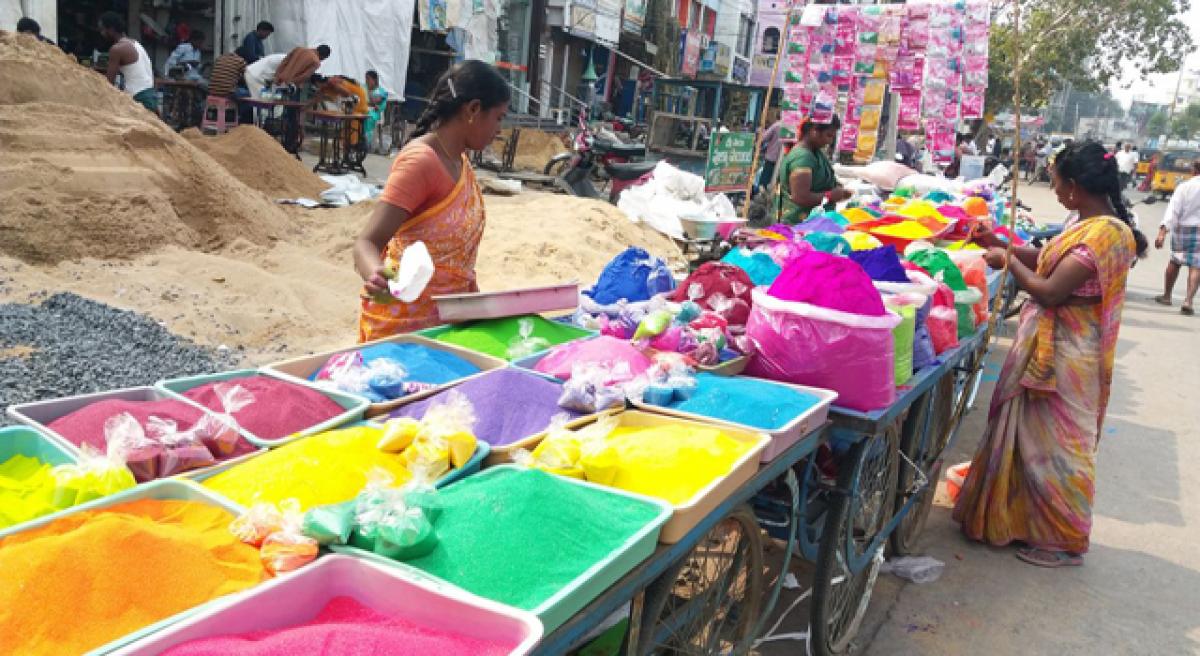Live
- Rythu Bharosa for all cultivable lands
- The timeless tale of the ‘Bava Maradalu Well’: A symbol of tradition and heritage
- Divinity Beckons in Rameswaram
- HMRL urged to build higher Metro pillars in Old City
- A rock-n-roll road trip across California
- Seminar on ‘How to crack Civils in 1st attempt’ held
- Aija Premier League Season-09: Grand Celebration of Sports and Festivity
- Celebrating the Visionary Legacy of Dr. Louis Braille on His 216th Birth Anniversary
- Farmers Struggle at Chinna Tandrapadu Procurement Center Amid Gunny Bag Shortage and Exploitation
- Gadwal MLA Bandla Krishna Mohan Reddy Inspires Students at District Science Fair
Just In

As Sankranti is around the corner, almost all front yards of Hindu households are adorned with beautiful rangolis. However, contrary to the colourful festive practice, doctors’ warning against the use of chemical-induced colour powders to decorate rangolis as they are harmful for women, children and pets.
Ongole: As Sankranti is around the corner, almost all front yards of Hindu households are adorned with beautiful rangolis. However, contrary to the colourful festive practice, doctors’ warning against the use of chemical-induced colour powders to decorate rangolis as they are harmful for women, children and pets.
The doctors urged the public to skip chemical colours not only during Holi, but also for the Sankranti. It is a regular practice of Telugu women to draw beautiful symmetrical designs with flour and coloured powders in the front yards of the houses. The designs turn into competitions and occasionally become the reasons for envy between neighbours in the month of Dhanurmasam.
The women decorate the rangoli or ‘muggu’ in Telugu, with colours produced from natural substances like flowers, fruits, vegetables and barks of some trees. These naturally obtained colours are non-irritants and cause no harm to women who draw the rangolis, or people who walk through them.
To add glitter and sparkles to the rangolis, merchants have brought in colours laced with chemicals like mercury, lead and bromides into the market. The markets in the Telugu states are already flooded with hazardous colours and the women have begun decorating their beautiful rangolis with the same. Continuous exposure of women and children to these chemicals is hazardous to health, say specialist doctors.
Dr Ravichandra, a paediatrician with a corporate hospital said, “The kids exposed to the chemicals like mercury and lead are three to five times more likely to suffer with Attention Deficit Hyperactivity Disorder (ADHD). The children play on the rangolis, play with the colours by the evening, and are unknowingly exposed to the poisonous chemicals.
A US-based study showed that pregnant women exposed to mercury, are most likely to harm their child with the diseases as the brain is sensitive to different environmental chemicals at different times of development.”
Dr Sudhakar, a senior surgeon said, “Lead can damage kidneys, nervous system and reproductive system and can cause high blood pressure. Though the usage has come down nowadays, it is being used to add a shine to the otherwise vibrant colours used for rangolis and playing holi.
Its exposure will lead to behavioural problems, mental retardation and seizures. Similarly long exposure of organic and inorganic mercury can cause hyper tension, visual field defects, muscle weakness and hearing loss including cerebral palsy in newborns.”

© 2024 Hyderabad Media House Limited/The Hans India. All rights reserved. Powered by hocalwire.com







